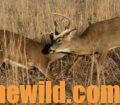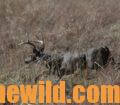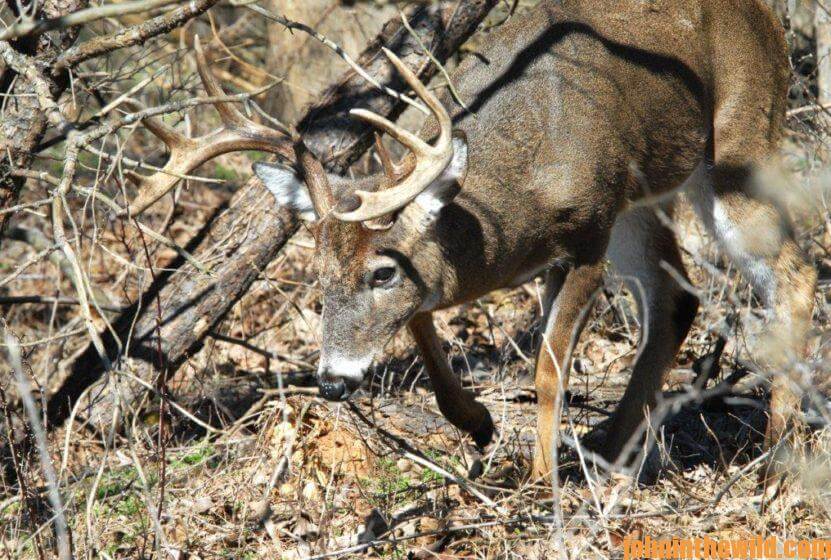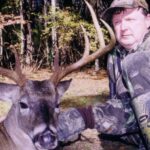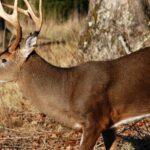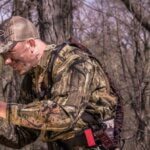Editor’s Note: During the last couple of weeks of deer season if you haven’t taken your buck, what can you do to insure your success? How can you bag the biggest buck of the season? At this time of the year, the older bucks know more about what you’ll do than you do. To take them, you must do the unexpected.
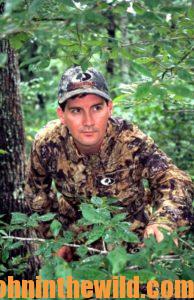 At the Tombigbee River swamp in west-central Alabama on the last hunt of the season at the hunting club I belonged to for 30 years, a few of us always would attack the seemingly-impenetrable gallberry thickets there, sometimes 1/4- to 1/2-mile long. Although all season we had known the deer probably held in these immense thickets, we also realized we had no way to hunt those deer. But on the last day of the season every year, the younger hunters would act as drivers after the older hunters climbed into their tree stands quietly on the edges and the end of a gallberry thicket. We younger hunters would carry our shotguns on our shoulders with slings. Then we’d bend over to move through the head-high thickets. We always wore hunter orange to help the other hunters spot us as we started upwind of the thicket and attempted to move through the thicket as slowly and quietly as possible. Standers received instructions to only take their shots when a buck stepped out of the cover and never to fire into the gallberry thicket. With this slow-moving tactic, the wind carried our human odor through the deer’s bedding area and forced them out of the thick cover, enabling the other hunters to take shots.
At the Tombigbee River swamp in west-central Alabama on the last hunt of the season at the hunting club I belonged to for 30 years, a few of us always would attack the seemingly-impenetrable gallberry thickets there, sometimes 1/4- to 1/2-mile long. Although all season we had known the deer probably held in these immense thickets, we also realized we had no way to hunt those deer. But on the last day of the season every year, the younger hunters would act as drivers after the older hunters climbed into their tree stands quietly on the edges and the end of a gallberry thicket. We younger hunters would carry our shotguns on our shoulders with slings. Then we’d bend over to move through the head-high thickets. We always wore hunter orange to help the other hunters spot us as we started upwind of the thicket and attempted to move through the thicket as slowly and quietly as possible. Standers received instructions to only take their shots when a buck stepped out of the cover and never to fire into the gallberry thicket. With this slow-moving tactic, the wind carried our human odor through the deer’s bedding area and forced them out of the thick cover, enabling the other hunters to take shots.
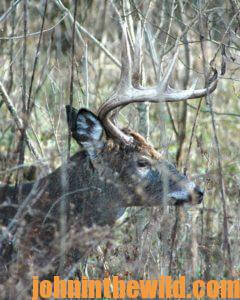 To make this strategy work, we had to get the standers to their stand sites quietly. By having standers on the outer perimeter of the thicket, not only could they get shots at deer, but their human odor would flow down the sides and out the back of the thicket. If a buck came out of the thicket, and a stander didn’t get a shot, his human odor formed a scent wall that made the deer jump back into the thicket and move toward the end of the dense cover where he didn’t smell other humans. Then the buck would come out the end of the drive where other standers waited.
To make this strategy work, we had to get the standers to their stand sites quietly. By having standers on the outer perimeter of the thicket, not only could they get shots at deer, but their human odor would flow down the sides and out the back of the thicket. If a buck came out of the thicket, and a stander didn’t get a shot, his human odor formed a scent wall that made the deer jump back into the thicket and move toward the end of the dense cover where he didn’t smell other humans. Then the buck would come out the end of the drive where other standers waited.
 Although the bucks could smell the human odor, they didn’t hear humans crashing through the cover. In the deer’s minds, hunters walked upright and not bent over. Often a driver would have the chance to see a buck in his bed, take his shotgun off his shoulder, ease his safety off and get off a shot before the buck ever stood up. However, many times the drivers observed the deer sneaking through the thick cover, before the deer reached the outer perimeter of the gallberry thicket. Using this slow-moving, hard-working technique, our hunting club consistently took two or three really-nice bucks at the end of every season. I never found moving on my hands and knees in heavy winter clothes for 1/4-mile or more fun, but the hard work did produce trophy bucks.
Although the bucks could smell the human odor, they didn’t hear humans crashing through the cover. In the deer’s minds, hunters walked upright and not bent over. Often a driver would have the chance to see a buck in his bed, take his shotgun off his shoulder, ease his safety off and get off a shot before the buck ever stood up. However, many times the drivers observed the deer sneaking through the thick cover, before the deer reached the outer perimeter of the gallberry thicket. Using this slow-moving, hard-working technique, our hunting club consistently took two or three really-nice bucks at the end of every season. I never found moving on my hands and knees in heavy winter clothes for 1/4-mile or more fun, but the hard work did produce trophy bucks.
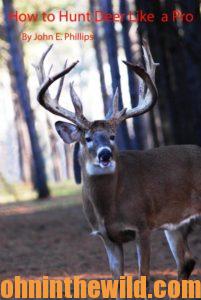 To learn more about hunting deer, check out John E. Phillips’ book, “How to Hunt Deer Like a Pro,” available in Kindle, Print and Audible versions, at (http://amzn.to/YpoQHA). You may have to copy and paste this link into your browser. (When you click on this book, notice on the left where Amazon says you can read 10% of the book for free, and you can hear 10% for free).
To learn more about hunting deer, check out John E. Phillips’ book, “How to Hunt Deer Like a Pro,” available in Kindle, Print and Audible versions, at (http://amzn.to/YpoQHA). You may have to copy and paste this link into your browser. (When you click on this book, notice on the left where Amazon says you can read 10% of the book for free, and you can hear 10% for free).
Tomorrow: Man-Driving to Make Deer Leave Thick Cover

